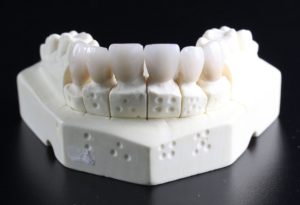
Here are some interesting facts about longitudinal fractures and what you ultimately need to know about these dental emergencies.
One of the worst things that can happen when it comes to your oral health is a longitudinal fracture. In fact, tooth trauma can be very difficult and painful. It can also wreak havoc on your overall dental hygiene in the long run. Here are some interesting facts about longitudinal fractures and what you ultimately need to know about them.
Who Is Likely To Treat A Longitudinal Fracture?
When it comes to a longitudinal fracture, it’s typically your dentist who handles the issue. In fact, many dentists are trained to perform root canals on their patients. However, sometimes, a longitudinal fracture may require a more specialized professional. The reality is, prosthodontists are available to work on your tooth restoration — if needed — to properly maintain your teeth’s health, function, overall comfort as well as your teeth’s appearance. As a result, it may behoove people to visit an oral health specialist if they sense something out of the blue when it comes to their general oral health and hygiene.
Different Types Of Longitudinal Fractures
While you might be surprised to know that there are different longitudinal fractures, it is key that you are aware of the difference between them.
- Craze Lines: One of the more common longitudinal fractures is a craze line. In fact, these are so common, almost all longitudinal fractures are of this type. However, it’s important to note that these types of longitudinal fractures only actually affect the enamel itself. As a result, the procedure to fix it requires less intensive measures than other types of longitudinal fractures.
- A Fractured Cusp: These types of longitudinal fractures will usually happen as a result of biting the surface of the tooth. In fact, this type of fracture will typically affect all different parts of the tooth — requiring more intensive and invasive measures to fix.
- Cracked Teeth: Longitudinal fractures also show up as cracked teeth. In fact, this also somewhat common problem is something that many dentists see often. But, a cracked tooth is ultimately an incomplete fracture.
- Split Teeth: When it comes to having a split tooth, you are dealing with a complete fracture. In fact, with split teeth, the fracture happens all the way from the crown into the gumline and extends through the middle of the tooth itself.
KEEP YOUR MOUTH HAPPY WITH ANNAPOLIS DENTAL CARE!
Whether it’s a regular check-up you need or a tooth extracted, your dentist in Annapolis is here to serve! Annapolis Dental Care has the expertise and compassion to work with you on improving your oral health. Your comfort and health are our top priorities, and so we go above and beyond to make our patients happy and give them the highest quality care. To set up an appointment today, please give us a call at 410-571-5014 or visit us online. For more oral health tips for you and your family, follow us on Facebook, Twitter, and YouTube! We are always looking for new patients, so if you live in Arnold, Annapolis, Anne Arundel County, MD, come on down!
This entry was posted on Friday, October 23rd, 2020 at 4:28 pm. Both comments and pings are currently closed.
